“Be careful, not afraid”: Cornell clinicians adapt and adjust to a new veterinary reality
By Melanie Greaver Cordova
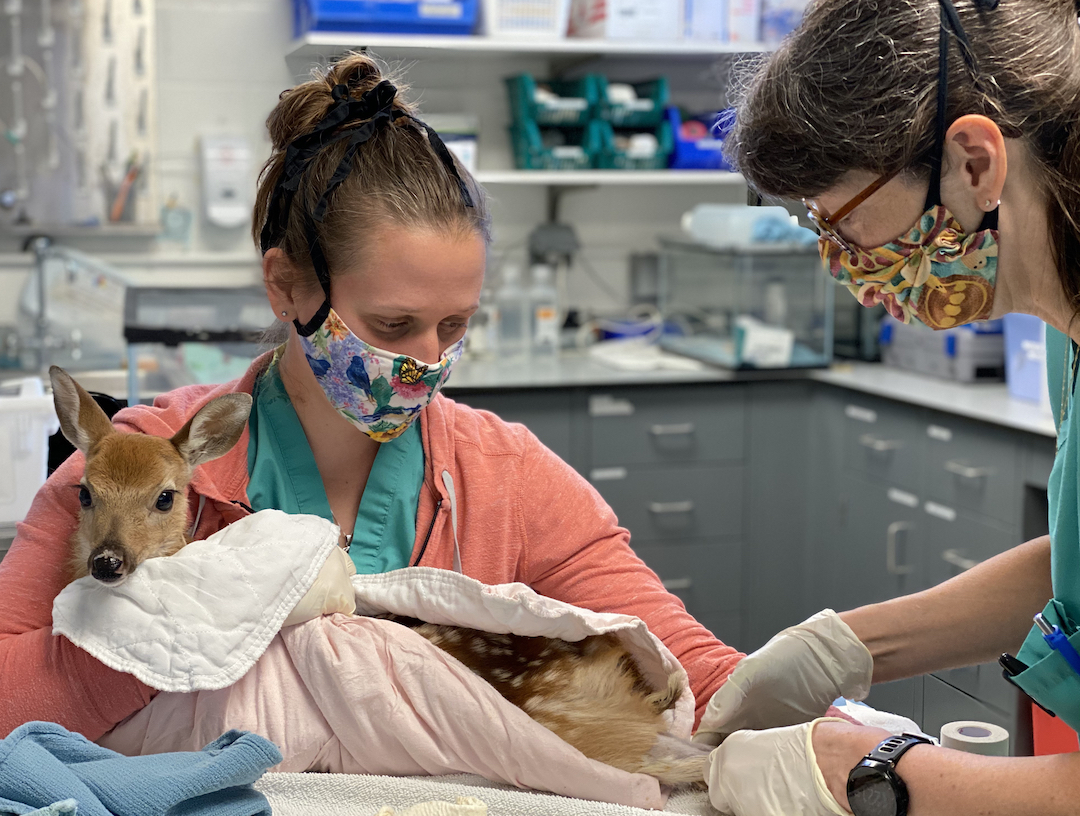
Six weeks into a shutdown that limited veterinary services across the United States, pet owner Jackie Wright was in a dilemma: Her dog Luke was showing signs of an ear infection, but the Cornell University Hospital for Animals (CUHA) was restricted to emergency cases only because a pandemic was ripping through the nation. Was this an emergency? Could the infection heal on its own?
“Luke is a small dog but he has really thick fur and a history of ear infections,” says Wright. “And then everything closed the day before his grooming appointment.”
After a few weeks, it became apparent to veterinary professionals like Dr. Meg Thompson, hospital director and associate dean of hospital operations, that a full reopening of Cornell’s facilities was likely to be gradual — in mid-May and early June like the rest of the profession. Veterinarians at CUHA and elsewhere had to get creative to keep serving patients like Luke — and to prevent non-urgent cases from growing into something urgent.
“We explored telemedicine options for our clients when it became clear we would have to adjust to a new normal,” says Thompson. Fortunately, CUHA was able to make use of a telemedicine app called TeleVet. TeleVet is a cloud-based program that connects clients directly with Cornell veterinarians; for CUHA, consults were available for primary care, dermatology, sports medicine, nutrition, behavior and exotics.
“I said, ‘Okay, let’s give it a whirl,’” says Wright. “And it was easy — so easy.” For Wright, who lives in a household of seven with family members who are immunocompromised, having the telemedicine option was worth more than the convenience. “As the one who leaves the house, going to CUHA during the pandemic was something I’d be nervous doing.” She was able to speak with assistant clinical professor and boarded dermatologist Julia Miller, D.V.M. ’12, about Luke’s ear infection, send pictures through the app and ultimately do a contact-free prescription pickup.
Providing telemedicine options for clients like Wright is just one way that hospital staff have adapted to the dangerous new reality of COVID-19 — fielding emergency cases, filling prescriptions, sanitizing more intensely than ever and adjusting otherwise in uncountable ways.
Thompson says she is proud of the resiliency of her teams at CUHA: “Their response to the situation we’re faced with is admirable.”
A sudden but safe transition
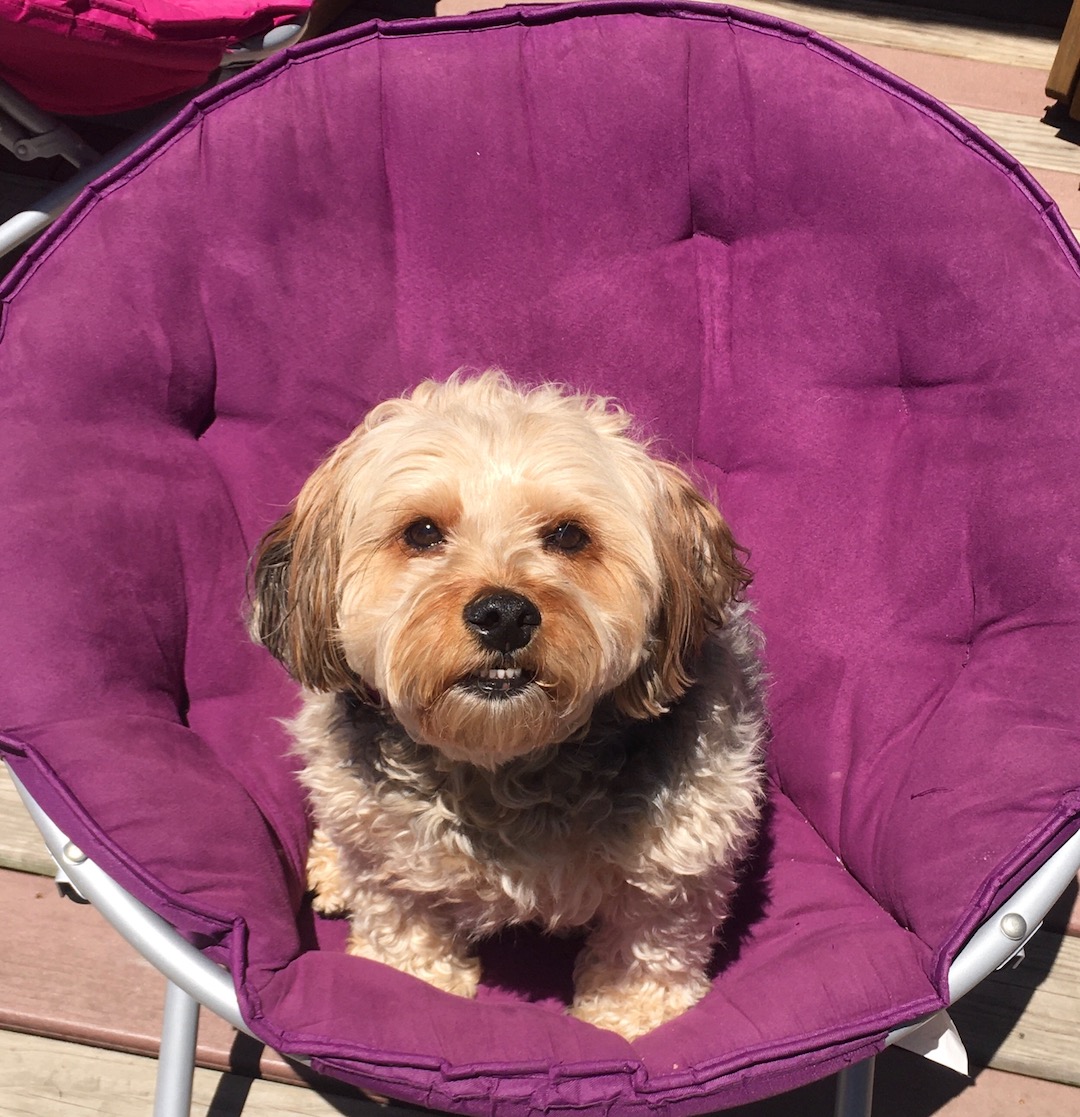
When Cornell president Dr. Martha Pollack announced that the university would be closing down any non-essential operations in mid-March, leadership at the College of Veterinary Medicine (CVM) discussed what that would look like for its many hospitals. As veterinary medicine was deemed an essential business by New York, CUHA could remain open to emergency cases. There were still decisions to be made, however, regarding patient intake and shift coverage.
In Ithaca, the Small Animal Community Practice temporarily closed its doors. For the companion, farm, equine and wildlife hospitals, all non-emergency appointments were postponed and people were shifted to 24/7 to fill student on-call and patient care coverage. College administration worked to obtain the needed supplies to keep workers safe, including various mask types, gloves, disinfectant and other personal protective gear. Volunteers sewed approximately 700 masks toward the effort.
The companion animal hospital vestibule was transformed into a contact-free patient transfer area, and the emergency department moved closer to the entrance. When the new protocol was established, the college placed signage around the physical entrance of the hospital instructing clients how to hand off their animal, all of which was reflected on the hospital website pages and social media. This massive overhaul was accomplished with remarkable rapidity and flexibility — now the protocol and signage has shifted entirely to curbside.
“It took extraordinary work and creativity from our faculty and staff at the college to ensure a safe and efficient transition from normal operations at our hospital in particular, where close personal contact is part of day-to-day life,” says Lorin D. Warnick, D.V.M., Ph.D. ’94, the Austin O. Hooey Dean of Veterinary Medicine.
As a college of veterinary medicine with many diagnostic and research labs, CVM is well-versed in biosafety measures. As soon as the university signaled the closure of so many of its facilities, director of biocontainment operations Paul Jennette ’87 and his team kicked it into high gear.
“I use the example of crossing the street to show how we make risky decisions all the time,” says Jennette. “By deliberately evaluating the risks involved, we can identify measures to reduce them to an acceptable measure and continue to do good work safely during a pandemic.”
The hospital embraced safety measures like wiping down patients when a pet was from a suspected or confirmed COVID household to reduce the risk of contamination. They implemented strategic work schedules, such as alternate days and staggering start and stop times. Masks and handwashing, already standard practice throughout the hospital, became constant reminders of the threat of a novel coronavirus potentially upending lives both personally and professionally.
“It took extraordinary work and creativity from our faculty and staff at the college to ensure a safe and efficient transition from normal operations at our hospital in particular, where close personal contact is part of day-to-day life.”
— Lorin D. Warnick, D.V.M., Ph.D. ’94, the Austin O. Hooey Dean of Veterinary MedicineGut-wrenching choices
At Cornell University Veterinary Specialists (CUVS) in Stamford, Connecticut, like at the other Cornell hospitals, tactics mirrored those of CUHA, including lowering staff density by using exam rooms as office space and reducing the number of people on the clinic floor.
This came with some unfortunate drawbacks, says Dr. Susan Hackner, chief medical officer and chief operating officer.
“The hardest decision we have made is not to enable clients to be present during euthanasia. For many of us, this was the most gut-wrenching decision of our careers, and there were many tears in the group while we did so,” she says. “This has been especially tough for the doctors and clinical staff in emergency and critical care.”
Dr. Anthony Gonzalez agrees. As a staff criticalist at CUVS, Gonzalez says not allowing clients in was challenging to envision. “Not being able to have clients present during their pet’s euthanasia has to be the hardest part of my career thus far,” he says. “The intimacy and trust shared between you and that client is indescribable and to take that away from them is truly an emotional struggle.”
Despite the personal risks involved, every Cornell animal hospital remained open in some form. “At the start of this crisis, when we were all terrified, and none of us knew how bad it was going to get or how risky it was for us to stay open, we gathered our leadership team to talk about what we should do,” says Hackner. “It took a matter of minutes for a unanimous decision — that, no matter what, our goal is to be here for the dogs and cats that may need us, in spite of personal risk. This has never wavered.”
The college’s other satellite hospital, Cornell Ruffian Equine Specialists (CRES) in Elmont, New York, remained similarly determined. “Our primary care and focus is and always will be on our equine patients,” says Dr. Norm Ducharme, chief medical officer and the James Law Professor of Surgery. They too increased remote work options and adjusted their intake methods for clients and patients.
“Remote work when you are used to the physical work with the horses is certainly a challenge,” says Jill Nordberg, CRES practice manager and licensed veterinary technician. “Social distancing is not in our nature and certainly not at an equine hospital. The idea of keeping our distance as well as working from home has been a challenge in the way of not feeling connected to your team.”
CRES supports horses in the racehorse industry and competitive show circuits, as well as pleasure horses that might need medical attention. Since many of the competitive industries have halted their programs, “naturally our caseload has significantly decreased as well,” says Ducharme. “For our team and daily workflow, this means less clinical patient work and more of a focus on in-house practice and procedures that can be updated during this time.”
Nordberg agrees. “This time is allowing us to slow down and make sure what we are currently doing with our daily routines and protocols are the most efficient and defined as they can be.”
Across Cornell’s animal hospitals, the desire to keep working to help owners and their patients remains strong, despite the threat the coronavirus has posed to everyone — CRES even gave hand sanitizer to clients.
Says Jennette, “The threat was and remains real, but the principle is be careful, not afraid. We can find that right balance between safety and productivity.”
Surviving and thriving
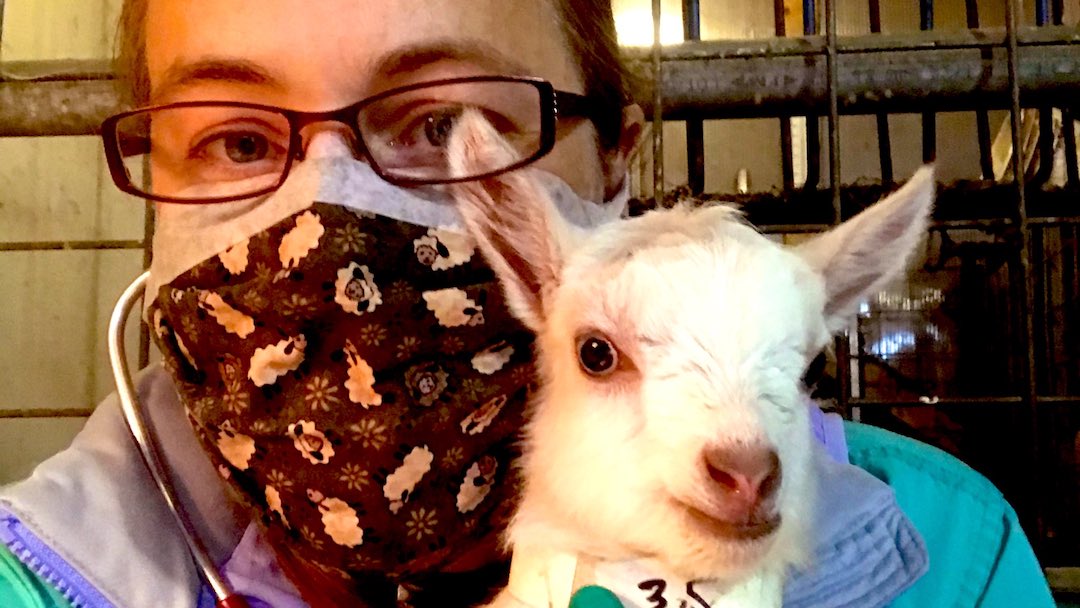
For some sections of CUHA, life continued with minimal changes. This was the case for the ambulatory service, whose visits to clients persisted uninterrupted. Instead of going in pairs or groups, a single veterinarian would drive to clients, and while on a service call, they practiced social distancing and wore masks when they needed to interact with a client.
“It was still very strange for all of us,” says Jessica McArt, D.V.M. ’07, Ph.D. ’13, associate professor of ambulatory and production medicine. “Our day-to-day routines generally remained the same, but it has been more difficult to keep up with urgent cases this time of year.”
Team meetings went from in-person to virtual, but with more frequency to make up for the lack of serendipitous collaboration. “We learned how important it is to check in with each other every day,” says McArt. “It doesn’t have to be for a long time, but it prevents a single person from getting overwhelmed by things.”
The ambulatory group then started seeing positive coronavirus cases in workers on some of the farms they serviced, and necessarily had to adapt their practices to keep people safe. “In the case of one herd that we spent a lot of time with, instead of going during the day, I would go from 5 p.m. to midnight to limit interactions with the workers,” says McArt. After a month of this, when there were no new cases among the workers, McArt and her team were able to resume normal hours. “We see multiple clients every day, and we don’t want to be vectors for disease ourselves.”
They therefore have kept a strict mask policy, especially in cases when social distancing isn’t possible. “There was a case with a 70-pound goat this week that was giving birth, and you just can’t social distance — that’s where our other precautions like the mask come in handy,” she adds.
Although the hospital managed this transition with the safety of its faculty clinicians, house officers, technicians and client service and administrative staff at heart, the pandemic pinpointed a major gap in the new reality of Cornell veterinary care: the students.
“Students are an essential component of the work we do,” says Thompson. “When the students had to leave, we were left with a professional gap. Instructing the next generation of veterinarians is why so many of us are here.”
“Treating animals and teaching students are two crucial activities,” says Sara Childs-Sanford, D.V.M. ’99, assistant professor and chief of service at the Janet L. Swanson Wildlife Hospital.
When students were sent home in March, the wildlife hospital similarly felt their absence. While they reduced their hours and adjusting workers’ shifts, the case volume remained quite high. “We rely a lot on students to function at the wildlife hospital, so we also lost a significant part of our workforce,” says Childs-Sanford.
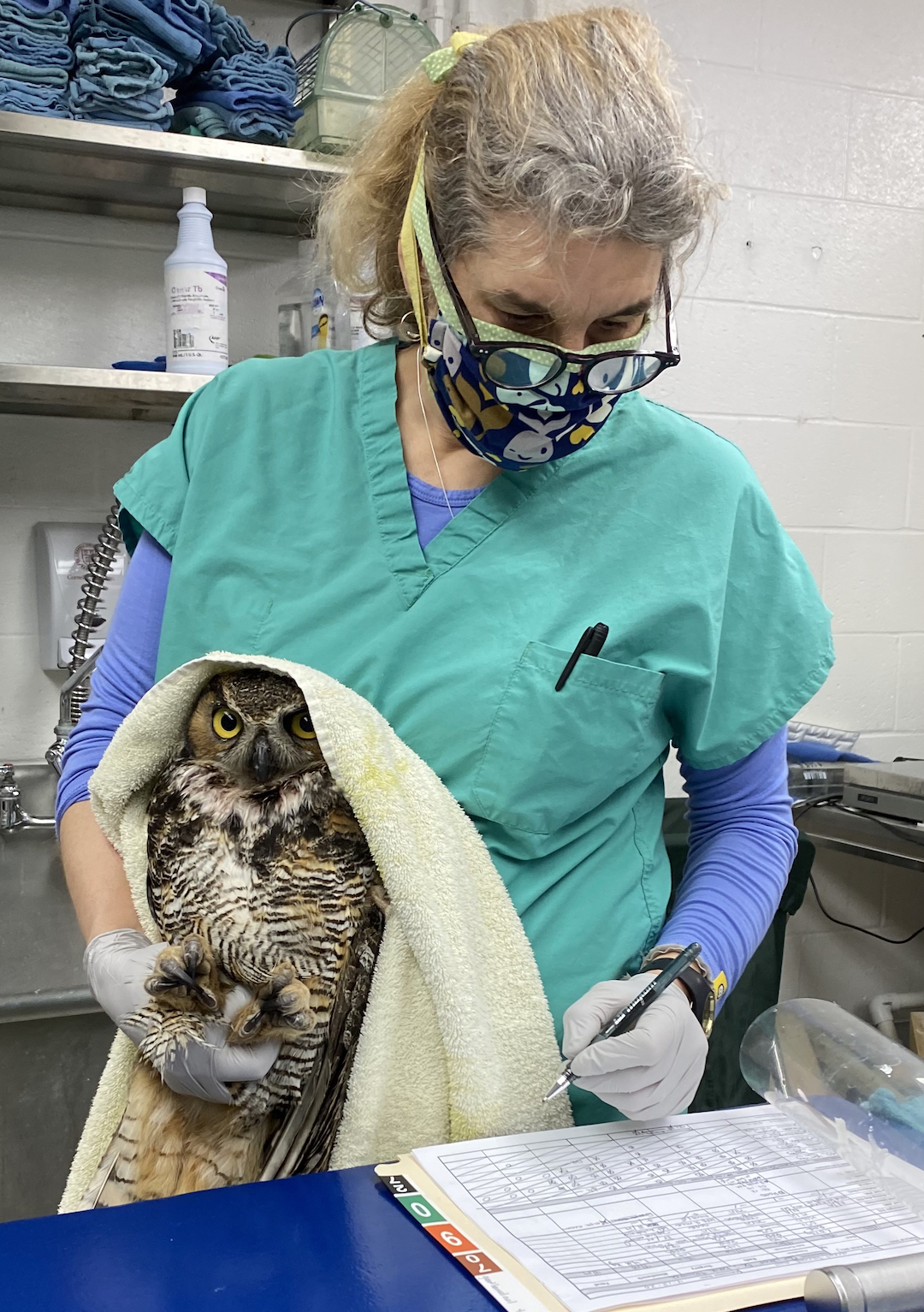
Students who normally would be gaining crucial hands-on skills at the wildlife hospital suddenly vanished, leaving both a logistical and professional gap. The remaining seven staff and clinicians had to adjust their hours and treat animals more quickly. Instead of being open to injured native wildlife 24-hours a day, the hospital was now only open for 12 hours during the day. “We’re grateful that we have been able to stay open and continue to provide this service to the community,” says Childs-Sanford. “A lot of general practitioners who would occasionally take in wildlife were not able to do so, so we’ve become an even more important resource.”
Unlike other hospitals at CUHA, there is a limited amount they can do to curb their caseload, since they deal entirely in injured wildlife and not client-owned animals. The pandemic struck, leaving the wildlife hospital to handle their busy season with the least amount of hands they’ve ever had. “We’ve had to change the way we function while also considering staff well-being at the same time, so no one gets exhausted or burnt out,” adds Childs-Sanford. “Everyone has been ready and willing, and have worked tirelessly to keep things working smoothly.”
The wildlife hospital staff have continued to provide veterinary care to hundreds of patients this spring despite the pandemic. Says Childs-Sanford, “I think we’ll look back and see what we already know — that we can do this, that we not only survived but we thrived.”
Spreading facts, not fear
When the pandemic struck, given its zoonotic origins and implications for veterinary care, referring veterinarians, alumni and animal lovers alike turned to the college for guidance. CVM therefore organized a variety of ways to provide outreach to these communities.
“It was important for us to be in contact with the groups who needed us, especially at the start when there was so much confusion,” says Thompson. “It was the impetus to start more regular outreach, which has had an astoundingly positive response.”
One such instance was a weekly Zoom webinar hosted by Thompson and facilitated by the college’s communications team. Initially envisioned as a call to answer questions from referring veterinarians about handling COVID operations, the series became so popular that Thompson welcomed alumni and community members as well. Each week was a new topic, including COVID-19 in dogs and cats, the virology of COVID-19, a discussion with the New York state veterinarians, implications of the CARES Act, an epidemic perspective for college campuses in the long-term and many others. In June, the series transitioned to every other week to be more sustainable in the long-term.
“It has been wonderful to hear from this network about the way our outreach has helped all of us,” says Thompson. “We want to be a resource people can rely on.”
When researchers discovered that, in very rare cases, coronavirus could jump from humans to cats, Thompson invited Elizabeth Berliner, D.V.M. ’03, the Janet L. Swanson Director of Shelter Medicine, to lead one of the webinars and offer her insights on handling cats and adjusting shelter medicine principles at large.
“Rather than speak to the profound ways in which COVID-19 has disrupted my life and ability to practice, I'd like to express how important these times of connection with experts and colleagues have been to keeping me going.”
— Claire Berian, M.A. ’85, D.V.M. ’92“We consult with animal shelters across our region and often nationally on protocols and procedures during the normal course of business, so as news was breaking on the pandemic, especially in how it was affecting our state, we shifted into a more demanding consultation role,” says Berliner. She and her shelter medicine team collaborated with other groups to provide new operations protocols, guidance on handling risks and what an animal shelter’s response to the community might be.
“There’s a ton of information out there,” she says. “It can be overwhelming to sort through it all so we have been trying to help shelters and communities understand what resources they need.”
In her talk, Berliner discussed the science behind COVID-19 as it relates to cats, and shared her recommendations in terms of procedures, spay/neuter operations and helping owners in communities impacted by disease. “Infections are rare in cats, and humans remain the source of transmission to people,” she says. “We have to remember that.”
Questions covered the notion of quarantining all cats in shelters before adoption or fostering (you should not), words of wisdom regarding rushed peer-review processes (read carefully and critically) and whether it was the best course of action to simply assume infected cats can infect humans until demonstrated otherwise.
“There’s no evidence for that,” says Berliner, “but we are following the abundance of caution model, particularly for cats in high risk settings with known exposures.”
Local veterinarian Claire Berian, M.A. ’85, D.V.M. ’92, of Ithaca Veterinary Housecall Services, has been among those taking part in these talks, describing the one hour session as a comfort to look forward to each week. “Rather than speak to the profound ways in which COVID-19 has disrupted my life and ability to practice, I'd like to express how important these times of connection with experts and colleagues have been to keeping me going,” says Berian.
Lending crucial equipment
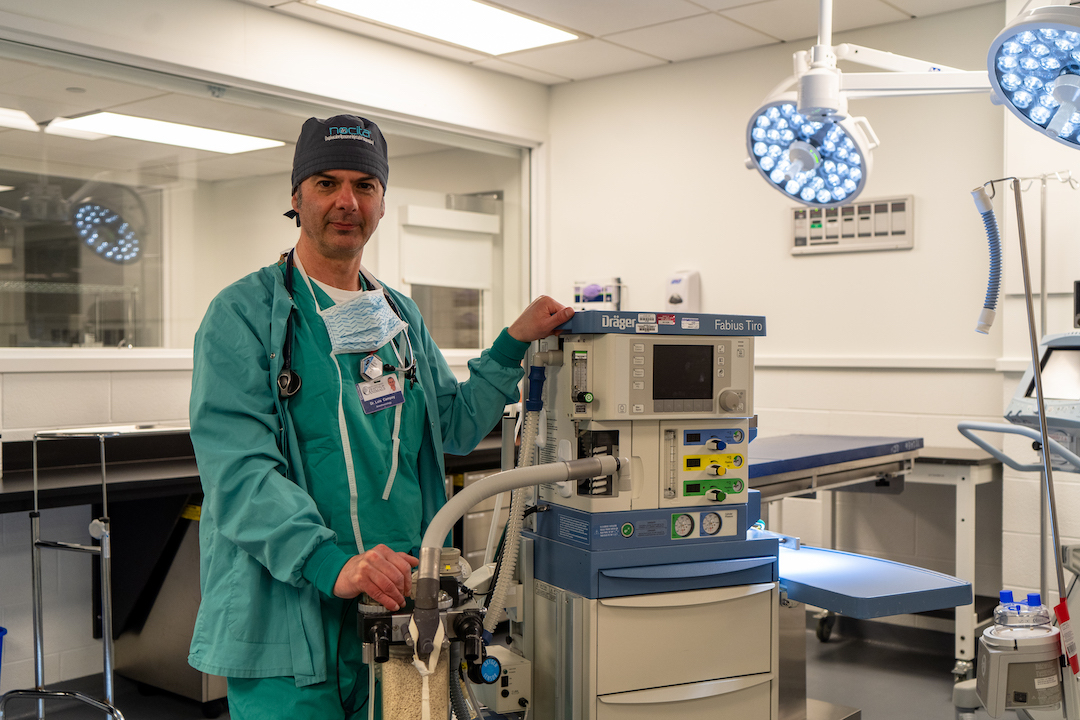
CVM outreach wasn’t limited to helping animals during this time. In fact, CUHA loaned and donated equipment and crucial supplies to human medicine hospitals during the peak of the crisis in both Tompkins County and New York City.
Among these supplies were two full-service ventilators and a high-flow oxygen unit sent to Weill Cornell Medicine in Manhattan by CUVS — New York City being the hardest-hit in the nation at the time — and gloves, face shields and more sent to Cayuga Medical Center in Ithaca. The college also provided hundreds of respirator and surgical masks and testing materials, and followed CDC guidelines on conserving protective equipment by only providing essential emergency service to animal patients during this time.
The aim, says Warnick, is “to make sure we can divert as much of our supply as possible to human health care.”
Veterinary care at CUHA was adapting to ensure staff safety, to continue to provide medical care to animals in need, to share key materials and expert insights — all as part of the college’s mission of aiding animals and people, despite the unprecedented circumstances.
Fashioning a new normal
One of the first signs of Cornell’s veterinary care embracing a new normal was in May and came in the form of telemedicine — previously an uncommon practice at Cornell.
“The transition to TeleVet has been an important one,” says Thompson. The goal was to take lessons from how hyper-virtual the world had become in the last few months and apply them in practical ways that could benefit patients moving forward.
“Keeping the density of people down at the hospitals will remain beneficial to the health of all involved, clients included, for some time,” Thompson adds.
For Wright, whose dog Luke benefited from one of the first telemedicine appointments, it had an added benefit. It certainly prevented Wright from being exposed to any potential cases at the animal hospital and pharmacy. Additionally, it spared Luke, who doesn’t travel well, from an arduous 34-mile car ride, and it kept Wright from having to deal with his anxiety — as well as the vomit in the back of the car that often resulted.
“Remember we’re all in this together.”
— Paul Jennette ’87, director of biocontainment operations“Taking Luke to the vet is stressful on him, and therefore stressful on whoever takes him,” says Wright. “If it’s not an emergency, I’m hoping I can use TeleVet again even when things open completely.”
In early June, Cornell’s animal hospital began seeing non-emergency patients in person once more, with modified processes to minimize the risk of a potential outbreak, which is still a possibility despite the county’s low number of active infections; on June 1, Tompkins County had 24 active infections and 136 recoveries.
Says Thompson, “We’ll continue to adapt to ensure the safety of our people, clients and patients. We have a highly responsive and adaptable team across the college.”
Jennette and his group had their hands full at this time, not only in assisting the animal hospital with preparations for a safe reopening, but also helping research and diagnostic labs maintain safe operations in spite of the pandemic.
“We were and are working on phased reactivation plans, which will enable a safe resumption of activities consistent with the governor’s directive,” says Jennette. “What people will find when they return to campus is an evolving landscape.” Facilities features like assigned instead of shared work stations, taping lines on the floor for social distancing, clear signage about room occupancy limits, continual disinfecting of high-touch surfaces are just some of the practical nuts and bolts of that evolving landscape.
This work necessitates cross-team collaboration, with the college facilities team serving as a focal point. “Our team has been here throughout the pandemic shutdown keeping our facilities operational, as well as the mail and receiving functions and the building care group,” says Wayne Davenport, director of facilities. He and his team are in constant contact with their university colleagues, and have adjusted or reviewed the college’s HVAC and other systems, processes for collecting waste, common water sources and space occupancy planning — all to help keep operations running and provide the safest environment the college can, especially as things started to reopen.
“We’ll be talking through public space planning with floor coordinators as we reactivate the buildings,” says Davenport, who is aiming for a consistent approach in terms of signage and space allocation so that clinicians and researchers can focus on their work.
“The best thing everyone can do is maintain social distancing,” notes Jennette. “Remember we’re all in this together.”
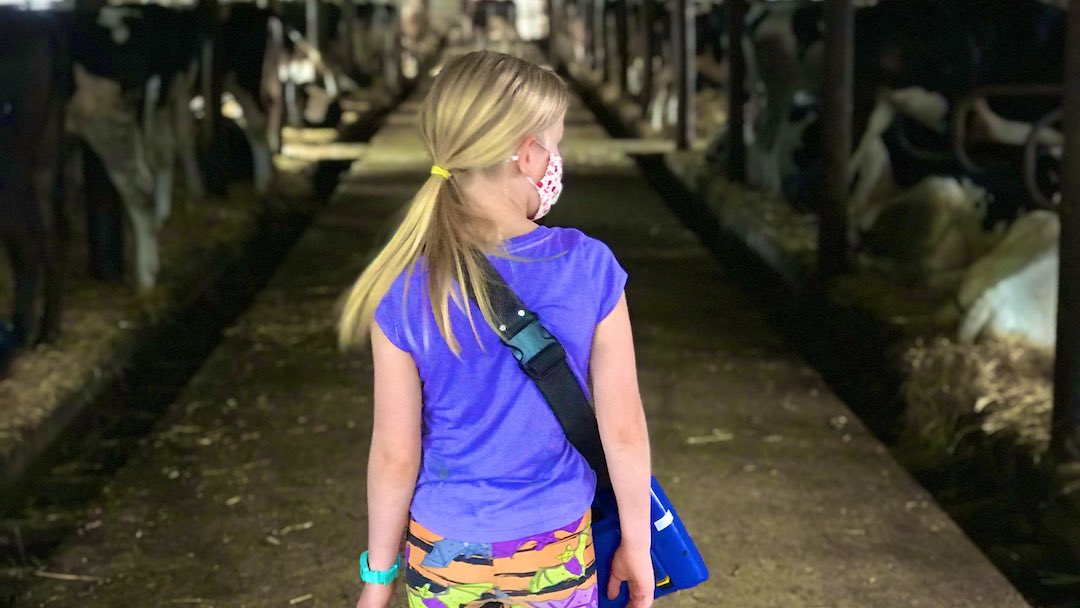
Moving forward
Despite the extraordinary circumstances Cornell faculty, staff and students were faced with this spring and summer — and no doubt will be faced with for some time to come — the CVM community has proven they have the resilience and flexibility to adapt.
“I’m pleased to see that providing excellent veterinary care, in some cases using more personalized and varied methods, remains at the forefront of our mission,” says Warnick.
“To keep our staff safe while still serving patients has been a professional challenge that everyone has met or even exceeded,” adds Thompson.
For many, the gradual reopening of CVM hospitals and facilities will allow them to further adjust to long-term changes. McArt notes that she is looking forward to getting back to her research on commercial dairies, most of which had closed to non-essential traffic. This, in addition to the return of students and easing of travel restrictions, would be welcome changes, she says. “Our group will be really excited when the students can return so we can be teaching instead of just doing. And being able to actually go places again on vacation or during off time will keep us happier and more productive.”
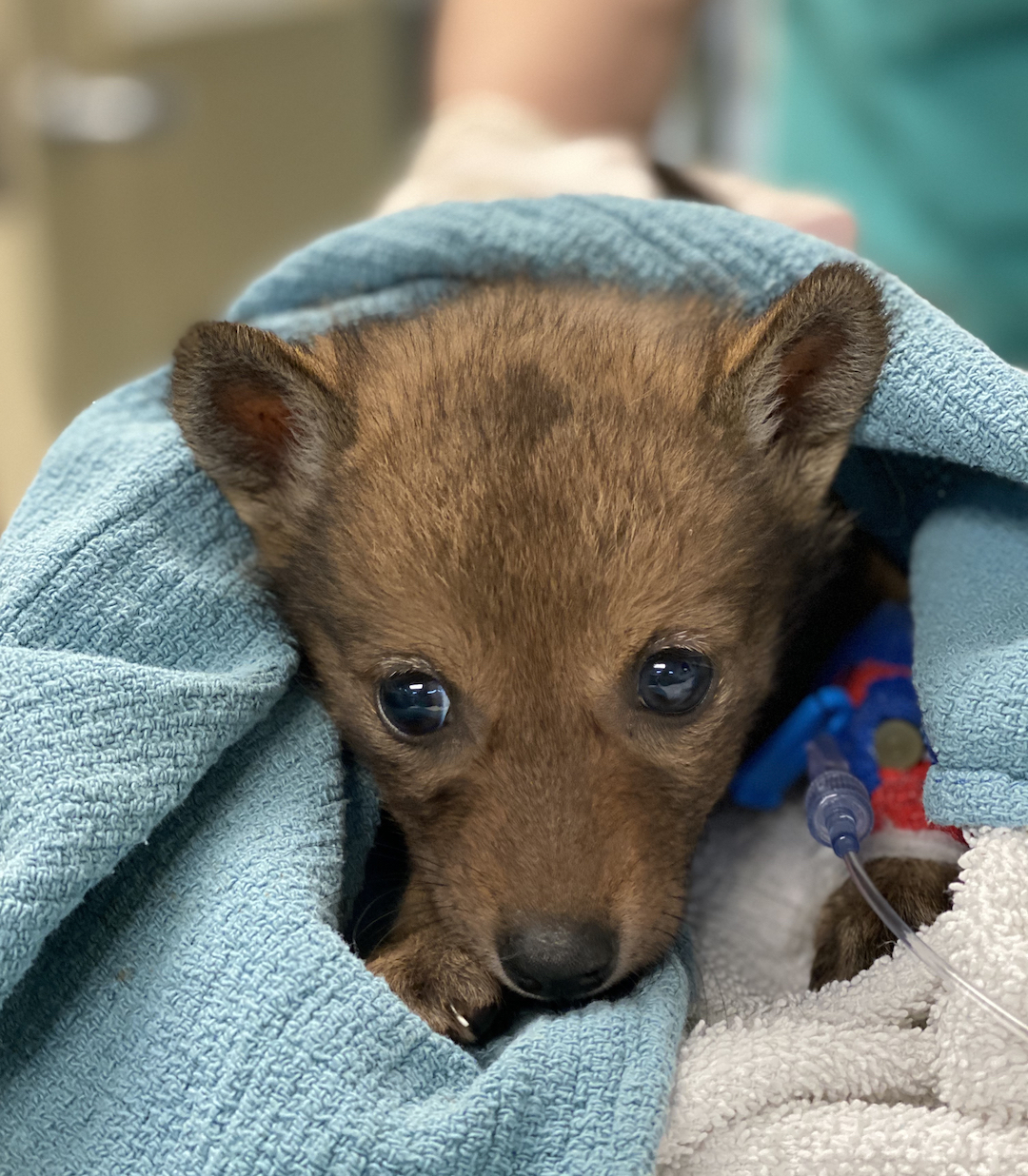
“We miss the student interaction. It will be wonderful to have them back,” agrees Childs-Sanford, adding that her colleagues at Cornell have made this trying time much more bearable. “We have an excellent group that’s really made this challenge almost a kind of adventure. I know we’ll get through it.”
At the satellite hospitals outside of Ithaca, both CUVS and CRES have felt the same way — the motivating factor is the passion to help animals, but it’s the people who have helped them get through it.
“We’ll look back and recall how many people stepped up, at huge risk to themselves, to help others,” says Hackner. “Our staff have adapted with professionalism, dedication and aplomb.”
Ducharme agrees. “We’re rallying as a team,” he says. “We’re all in this together.” •


